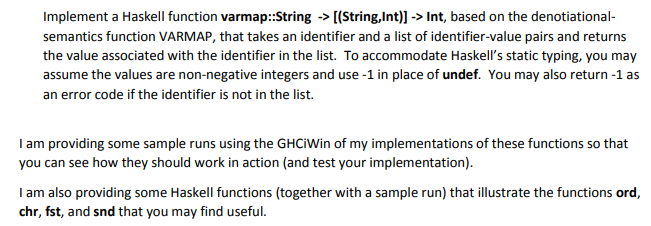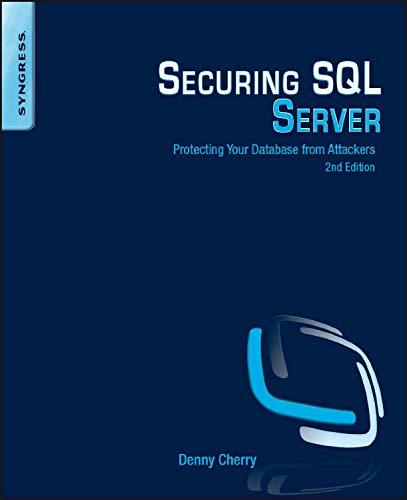Question
In class, we used denotational semantics to evaluate a decimal number using a function Mdec. We could define a similar function to evaluate hexadecimal numbers
In class, we used denotational semantics to evaluate a decimal number using a function Mdec. We could define a similar function to evaluate hexadecimal numbers as follows:
MhexDigit(0) = 0,, MhexDigit(9) = 9,
MhexDigit(A) = MhexDigit(a) = 10,,MhexDigit(B) = MhexDigit(b) = 11,,
MhexDigit(F) = MhexDigit(f) = 15
Mhex(d) = MhexDigit(d) (Base case one-digit string)
Mhex(dndn-1d1d0) = Mhex(dndn-1d1)*16 + MhexDigit(d0)
Note that I am allowing both upper- and lower-case letters for the hexadecimal digits for 10,11,,15. Implement a Haskell function mHexDigit to return the numerical value of a single hexadecimal digit. You will need to use guards and the ord function from the Haskell module Data.Char. The Haskell type should be mHexDigit::Char -> Int Now, implement a Haskell function mHex::String -> Int to evaluate a hexadecimal number given as a string. Finally, since mHexDigit is only used by mHex, implement a Haskell function mHex::String -> Int in which mHexDigit is defined using the where or let contruct.

Implement a Haskell function varmap::String -> [(String,Int)] -> Int, based on the denotiationalsemantics function VARMAP, that takes an identifier and a list of identifier-value pairs and returns the value associated with the identifier in the list. To accommodate Haskells static typing, you may assume the values are non-negative integers and use -1 in place of undef. You may also return -1 as an error code if the identifier is not in the list. I am providing some sample runs using the GHCiWin of my implementations of these functions so that you can see how they should work in action (and test your implementation). I am also providing some Haskell functions (together with a sample run) that illustrate the functions ord, chr, fst, and snd that you may find useful.

Step by Step Solution
There are 3 Steps involved in it
Step: 1

Get Instant Access to Expert-Tailored Solutions
See step-by-step solutions with expert insights and AI powered tools for academic success
Step: 2

Step: 3

Ace Your Homework with AI
Get the answers you need in no time with our AI-driven, step-by-step assistance
Get Started


